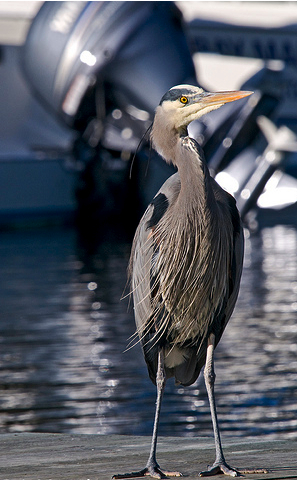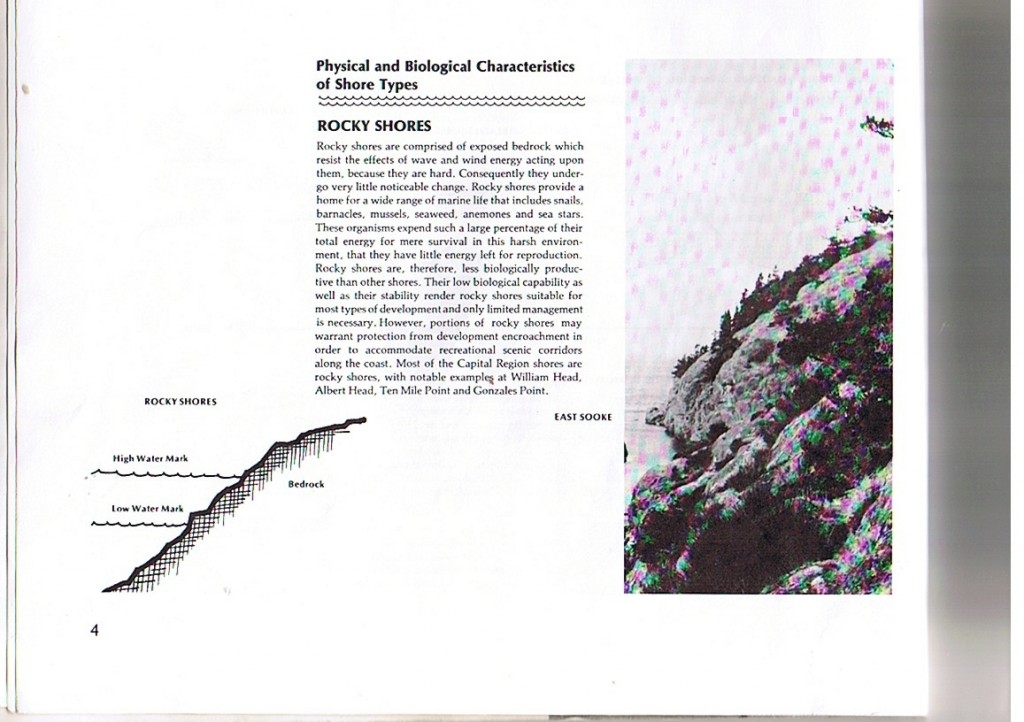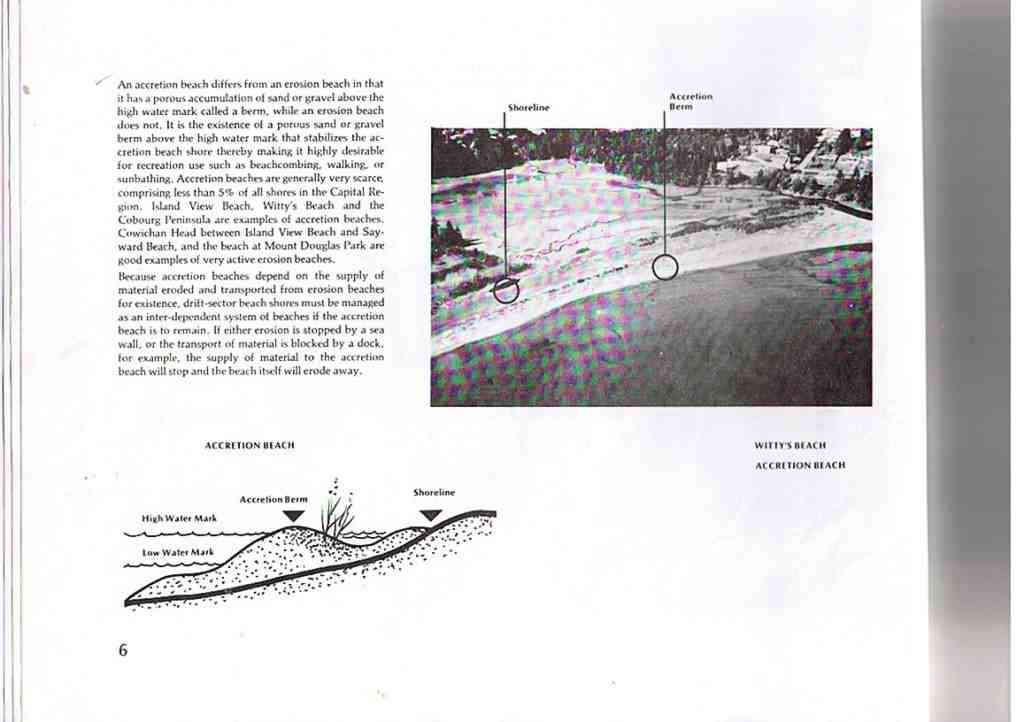PEDDER BAY GROUP FOUR SCIENCE PROJECT IDEAS
January 21 1997
G.Fletcher
OVERVIEW:
- Our overall theme this year for the IB Group four project as chosen by the first year science students of Lester Pearson College is Pedder Bay. Since we have had some experience with this region for some time, it is the intention of this file to lay out some of the possible themes within this project and to point out some possibilities for collaboration of members of the different sciences in the groups for the purpose of doing these preliminary studies..
- It is expected that research could be either of the descriptive or the experimental variety. Both approaches are valuable when atttempting to understand a system.
- It is suggested that in order to make this research of future lasting value as well as present value, some projects could seek to set up protocols for long term research and establish sites on the already existing Pedder Bay web site which would have permanent value for baseline and and a data bank for follow up information. In order to do this it is necessary to have the reports submitted in electronic form done in html, now quite easy to do because of the presence of the Adobe GoLive software on the college computers. Also word processing done in other formats can now easily be converted to basic html by these computers.
- Students will also prepare a poster presentation for their final report, and it is suggested that the these posters be available for viewing in the dining hall as well as on the internet for several days prior to a general session in the dining hall when each group will be given time to respond to peer questions on their presentation.
- It also should be obvious that individuals or groups may do further follow-up in-depth depth studies that would be appropriate as extended essay topics in any of the sciences. The amount of easily obtained data that we have at our fingertips here is potentially very great.
Pedder Bay as a Seasonal Estuary:
The distribution of the halocline, the freshwater-saltwater interface is quite pronounced at this time of year. It is easily determined by using the salinometer directly , or from samples collected and analysis in the lab. The halocline could have great variability in different parts of the bay- from head to mouth as well as side to side , and it could change in relatively short periods of time. It could be influenced by tidal cycles and there could be correlations made with rainfall. Also the mixing of water coming out of the river could have an effect on the salmon and bird habitat of the estuary. The Chemistry of all aspects of the sea water, pH, dissolved oxygen, nutrients could be examined. How well mixed is it or is there stratification. These factors determine life zones of the bay.
Bioluminescence in the Bay :
Timing , distribution , quantification of this phenomenon may be possible depending on conditions and time of year.
The Effect of Artificial Dock Lights on Organisms:
Experimentation with screening lights shining in the water to change intensity and color on the influence of the attraction of organisms would be possible.
Light Attenuation in the Water Column:
The visibility through the water column can be roughly measured by our Secchi Disk, a 50cm white disk which eventually disappears when lowered in the bay ( can be done from the docks) . It always has different depths of visibility if measured inside the bay versus the outer part. There is probably a very defined line in the outer bay where the visibility changes suddenly. A transect of measurements through this zone could give some interesting results.
There is another effect that we always note and that is large difference in plankton in the inner and outer bay areas. This difference is in species composition as well as population density. There is probably a correlation with several physical factors, the predominant one being the distance into the bay that the currents going by the outside of the bay actually penetrate, both laterally and at depth. This could be quantified and modeled.
Current Patterns in the Bay:
We often observe while diving that there is a counter-gyre at the mouth of the bay.. On an ebb tide, the water will come in along the south side of the bay as far as Fossil Point. turn north and flow out on the north side. This rotation may be the cause of the accumulation of the tide line drift flotsam in a tongue extending into the bay on some tidal exchanges. We have 10 buoys equipped with radar reflectors that can be used to accurately plot these current patterns. With Second Nature moored near fossil point, accurate trajectories of the drifters can be measured. There may be collaboration with people measuring plankton and turbidity levels to see if there are correlations of these factors.
What effect does the shape of the bay have on current velocities? Since the bay is generally half-funnel shaped, it should be possible to produce a mathematical model to predict the effect of shape on current speeds at different parts of the bay.
Effect of Boat Speed on Shoreline Wash:
Wave height, frequency and duration of inundation by shoreline species as the result of wash from boat traffic could be a significant factor in the Pedder bay ecosystem .
Wave Energy in Pedder Bay:
The shape,depth and orientation of Pedder Bay allows wave energy to have an effect on the different ecosystems within the bay. Calculations can be made for predicting Fetch and the effect it has on the widths of the bands of intertidal zonation.
Oil Pollution and Pedder Bay:
The very real possibility of some day having to cope with an oil spill in Pedder Bay is of some concern. We have recently been in consultation with Dr. Malcolm Hepworth who visited the college and introduced us to the idea of using Peat Pellets for oil spill cleanup. There is a possibility of doing small scale experimentation on the process of oil removal. Also there is a good opportunity here for extended essay follow up, and publication of useful research.
Chronic Oil Pollution In Pedder Bay:
The small amounts of oil residues from boat traffic is significant in some harbours. This oil can be collected by skimming with a commercially available absorbent material made for soaking up oil. Calculations of surface area covered by droplets of oils of various viscosity could also be measured. A survey of boat owners and bilge-pumping habits of their boats may also be revealing, and may help inform owners of alternate strategies.
Sedimentation and Sediment Dispersion related to Water Velocity
Cores of sediments taken on a line perpendicular to the shoreline might show a decline in sediment size or mass (easily measured by our particle Sieves and scales– screen size ranges from 4 millimeters to 40 microns available. Since sediment transport varies with current velocities, models about sediment deposition could be proposed and tested.
Some of the sediment is Biogenic ( barnacle shells), Carbon from old forest fires,
Anthropogenic: wood waste from log booms, erosion materials from the influence of human activities. Probably sedimentation rates could be calculated.
Terrigenous material, sediments from erosion further out at sea or along shorelines.
Glaciation Evidence on Pedder Bay Shorelines:
What is the extent of glacial evidence around the bay? There is a large conglomerate on fossil point,
granite boulders on Weir Point, glacial striations on bedrock around the bay. Calculations could be done on the forces required to transport these, and estimates of distances traveled could be made.
Alternate Energy Potential of Pedder Bay:
What is the volume of water that could be made to generate energy from Pedder Bay if a tidal barrage was installed at various locations in the bay ? What is the fresh water runoff potential if a dam was created on the Salmon Stream .
The Salmon Stream:
Since the stream is part of the input to the Pedder Bay system, it can be iuncluded in the study of the bay. Food webs in the stream, flow volumes of the river, temperature regime of the water as we go from early to late spring, these questions and more relating to this stream could be investigated. The waterfall itself has some potential for problems to be generated.
The Sewage System:
Both Biology and Environmental Systems students have already been through the part of the system that handles our liquid waste disposal. They have been made aware of the inputs and outputs of the system and the role of microorganisms in it’s treatment process.
Other areas to be pursued: Information is available on the model for dispersion of effluent from outfalls. There is a relationship between depth of the outfall and the rate of dispersal of coliform bacteria that is a bioindicator for sewage. Essentially a plume comes out that disperses like a cone . It could be hypothesized that the dispersal of this cone varies according to whether the tide is rising or falling, with a consequent ebb and flow of current. Samples of water taken at specific times and locations around the outfall could be used to test the model of dispersion.
- Coliform bacteria can be cultured in the lab.
- Fluorosceine is an effective dye for measure of dispersion. It can be added at the treatment plant. Possibly it could also be added in small increments directly into the outfall stream by a diver.
The outfall can be visited by diving and visual observations and measurements can be made.
In addition two other outfalls discharge into Pedder Bay: The Helgeson Point Outsell from the DND and the Pedder Bay Marina Outfall. Monitoring of dispersion of coliform could take place around those outfalls as well. Previous coliform tests by environmental systems labs have shown a higher occurrence of coliform in the vicinity of the Pedder Bay Marina itself.
Bird Life in Pedder Bay:
The bird population changes seasonally in the bay: several species of grebes, muralist, ducks and mergansers, as well as herons, kingfishers, buffleheads, scoters, and Rhinoceros auklets are residents . If the whole bay is considered as a bird habitat, it is likely that different species have different patterns of distribution. The locations of different bird populations , the timing and population levels of these and correlation to weather patterns has not been done. There is a concern that boat traffic, may already be impacting on these birds. In the future the specter of Sea-doos in the bay would no doubt seriously impact the birdlike. Some of the birds such as the Western Grebe, are one of the few bird species that nest on the Canadian Prairies and then overwinter in small protected bays. A good baseline study of these populations could be valuable for protecting them in the future.
The Cormorant Influence:
For the past four and a half years Cormorants have taken up roosting in the trees along the south side of Pedder Bay opposite the college. Recently we have referred to the presence of these birds as a major reason for seeking protection for that part of the forested strip from the possible effects of a campground and trail system proposed by the DND. At present there are no statistics on the actual number of birds using the site, the timing of their use and the effect of their use on the vegetation ( note: some Douglas fir are showing signs of crown death. ) It is possible that there is a considerable change going on in the soils of area with nutrients and acidification from droppings. A controlled study could be set up to monitor this .
Species Diversity:
There are a number of indices of species diversity available. Shannon, Simpson etc. Several sites could be chosen for a comparison of the effectiveness of these indices. Various ecosytems can be compared,: the fouling ecosystems on the dock skirt , the life on a square half-meter under the floats, distribution of algae relative to light levels, the rocky intertidal, the estuary plants or invertebrates, the tide lines on the small beaches ( abundant with amphipods).
Invertebrate and Algal Distribution and Biomass in the Intertidal zone:
Permanent monitoring plots could be established whereby weekly cropping of Fucus , the brown algae, could lead to productivity comparisons of different regions of the bay… Correlations may be established with many other factors. north South side exposure, inner-outer bay influence, etc. Several permanent reference pegs drilled in by our students several years ago already exist along the side of Pedder Bay. At fossil point we have past records which can be contrasted with present populations.
Ecological Succession:
For many years, the students of the environmental systems classes have collected data on succession of the diatom community on glass slides suspended in Pedder Bay. The same process can be used to test the effect of different substrates and different chemicals on succession . We do have one commercial preparation , a wax called easy net which can be spread on substrates for controlling succession of fouling organisms . There has been a great deal of research by chemical companies and the military into different chemical coatings and materials that can be used to retard organism growth. Slower growth means fuel savings for ship hulls going through water.
Invertebrate Attachments :
Bay mussels are abundant on the docks, their use of the Byssal thread, an elastic-like substance could be a subject of an interesting study. Tensile strengths of these threads from mussels of different exposures could be compared.
Invertebrate Dynamics:
A number of invertebrates are easily obtainable for various studies of physiology. . A few are listed here:
Sponge: filtration rates
Mussels: cilia beating patterns
Tube worms, contraction strength, speed of withdrawal, light sensitive.
Shrimp: transparency allows internal dynamics to be observed, temperature variation can affect heart rates.
Barnacles: calculations of water volume filtering when feeding.
Anemones: these have a primitive nerve net which responds to touch- measurement of reaction times possible.
Heart Cockle: Escape response speeds
Crabs: decorator crabs have some interesting behavior related to dressing themselves for camouflagewhen exposed to different materials.
Kelp growth studies:
The growth parameters of algae transplanted onto substrates suspended from the docks can make an interesting study. Bull kelp can grow several centimeters a day. Direct measurement of migration of punched holes in the lamina is one way for this study. Also the translocation of nutrients can be studied by the transmission of weak solutions of radionuclides supplied in one area of the lamina or leaf. Marine algae are also a good source of biogas for energy, can production rates be calculated.













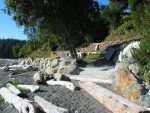




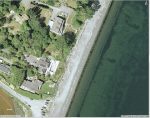


























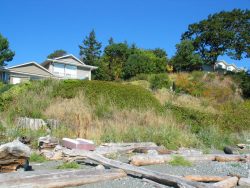
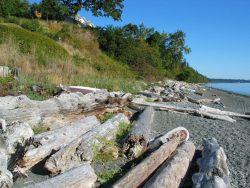



 11.
11.
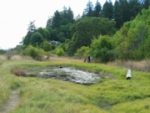















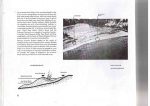



















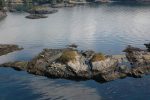




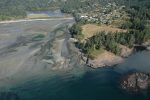






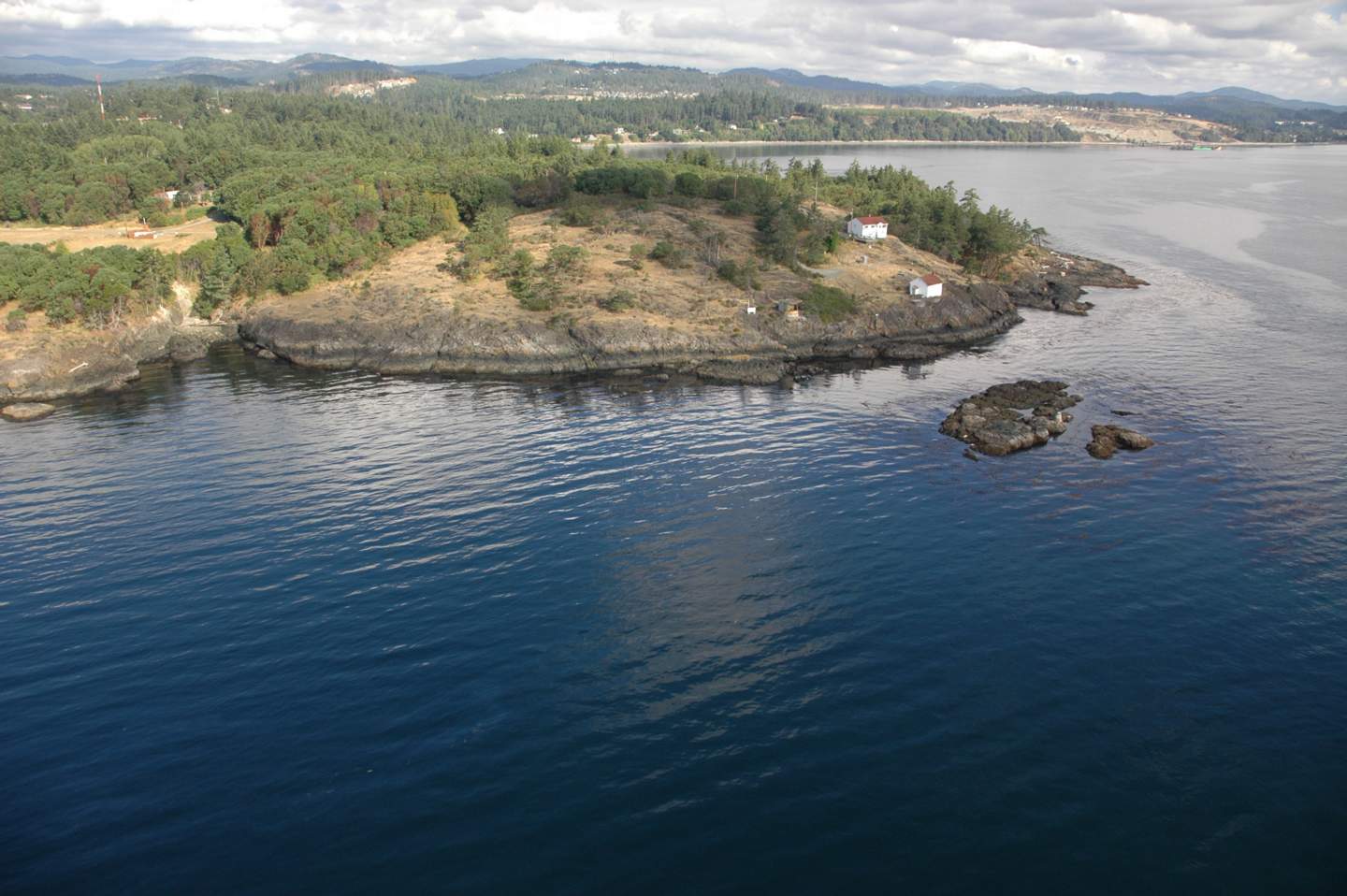

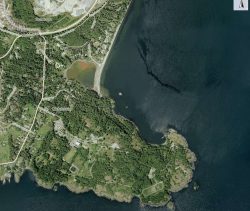








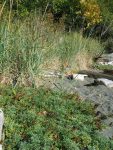




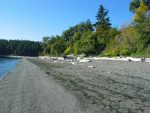


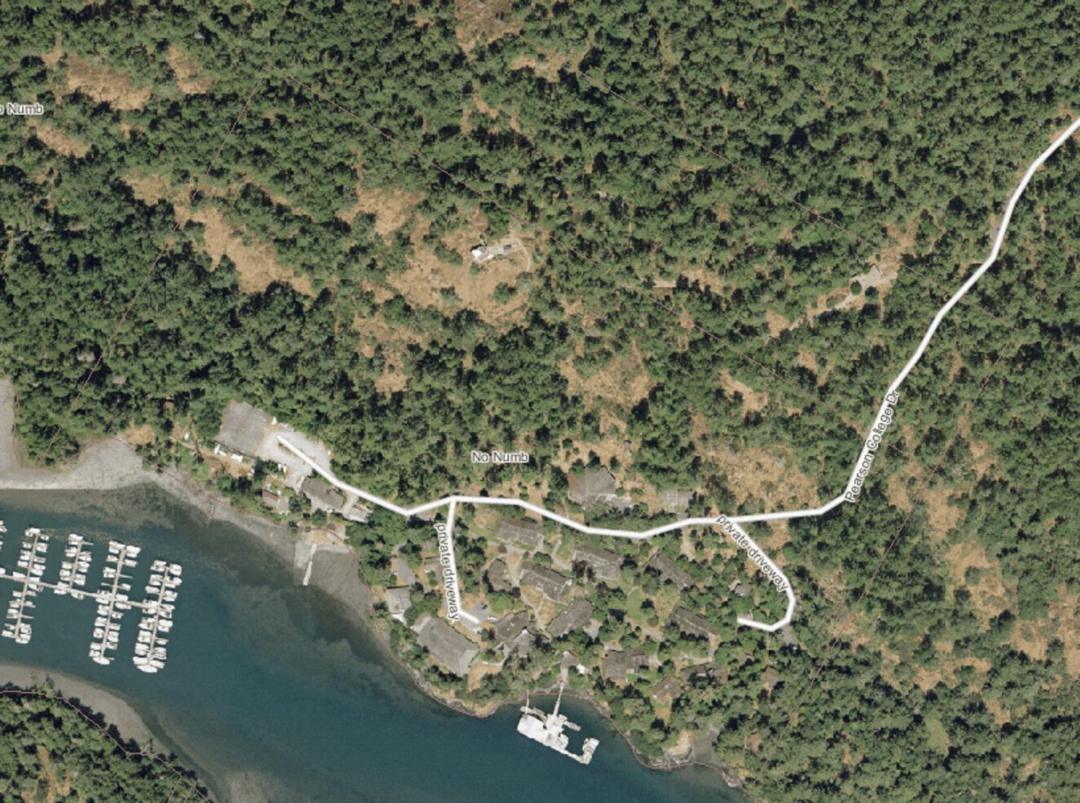







 Often in the spring when the sunlight levels are adequate, the nutrient laden water from winter run-off may support a non-poisonous red tide. A deep reddish bloom caused by the organism Mesodinium rubrum will cover parts of the bay. This is a unique marine photosynthetic ciliate which can fix energy because it has a cryptophyte endosymbiontic red algae inside it. A good example of a mutualistic relationship occurring on a massive scale within the bay.
Often in the spring when the sunlight levels are adequate, the nutrient laden water from winter run-off may support a non-poisonous red tide. A deep reddish bloom caused by the organism Mesodinium rubrum will cover parts of the bay. This is a unique marine photosynthetic ciliate which can fix energy because it has a cryptophyte endosymbiontic red algae inside it. A good example of a mutualistic relationship occurring on a massive scale within the bay.


